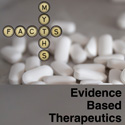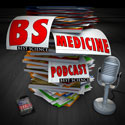In episode 141, Mike and James whine about the Beers criteria that is used to evaluate drug use but in the end they realise that all drug use criteria are quite arbitrary and that individual drug use issues need to be dealt with individually. To that end we discuss general concepts as to how to review patients on polypharmacy.
Shownotes
1) Different drug use in the elderly criteria
Arch Intern Med 2003;163:2716-24
Pharmacother 2010;44:1968-75
Arch Intern Med 2007;167:781-7
Dtsch Arztebl Int 2010;107:543–51
2) Association of drug use criteria and bad outcomes
Ann Pharmacother 2007;41:438-8
Am J Med 2009;122,1142-9
J Am Geriatr Soc 2011;59:875-80
Ann Pharmacother 2010;44:1725-32
Age & Ageing 2008;37:673–9
Arch Intern Med 2011;171:1013-9
3) Studies of unsafe prescribing
Arch Intern Med 2009;169:1952-60
Drugs Aging 2008;25:61-70
J Gerontol A Biol Sci Med Sci 2007;62:1172-81
Arch Intern Med 2009;169:1952-1960
Drug Safety 2007;30:171-184
Drug Safety 2009;32:489-98


